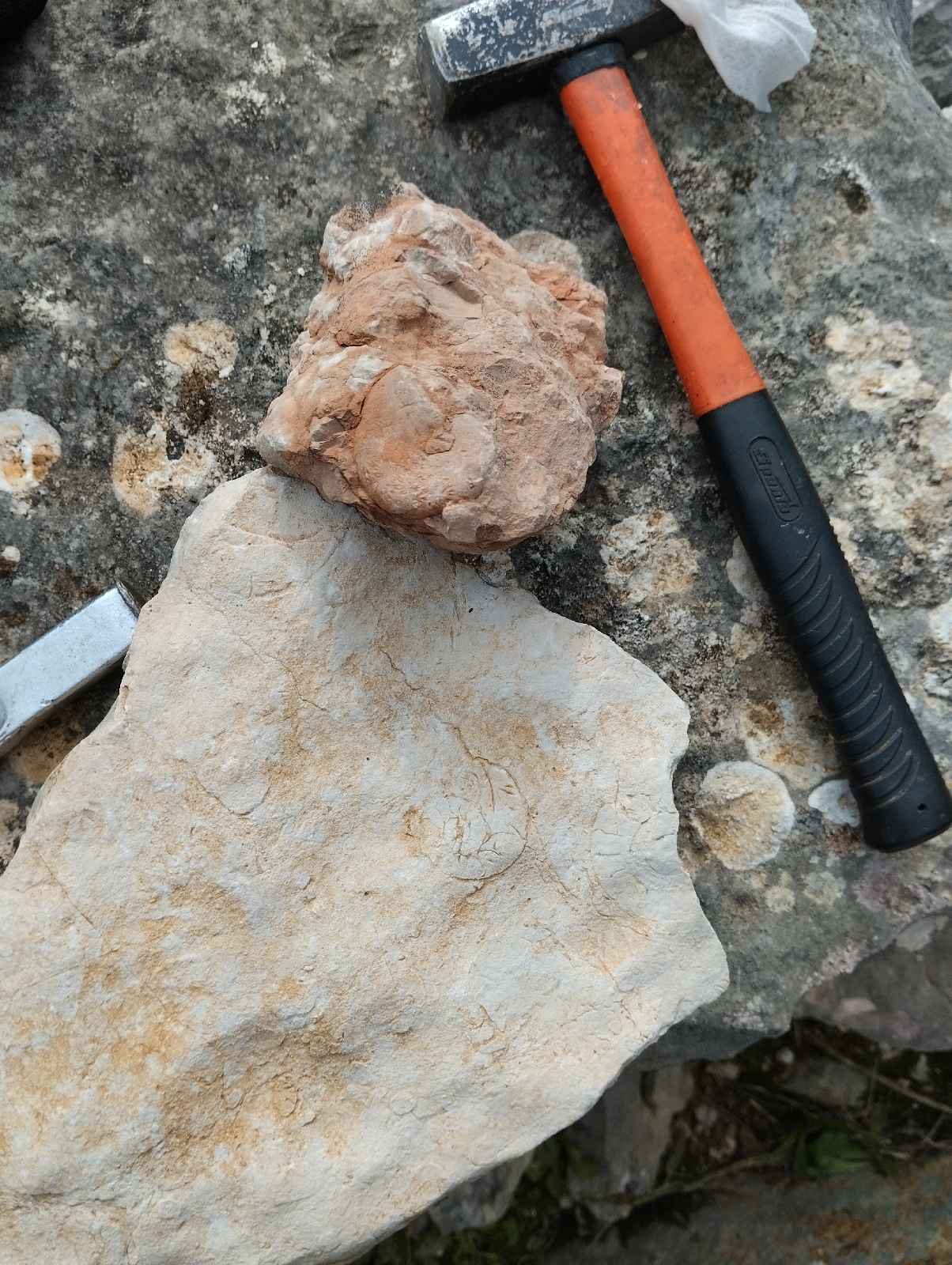NEW AMMONITE SPECIMENS REVEAL MORE ABOUT ANCIENT THESPROTIA: AMFC-0005,AMFC-0006 AND AMFC-0007
NEW AMMONITE SPECIMENS REVEAL MORE ABOUT ANCIENT THESPROTIA
As you may have already guessed,I went on the field again today. It's been like 4 months, and several storms had been around, so I couldn't go earlier. Today I came across 4 New Specimens, 1 of which I won't reveal until further investigation on it happens. Yes, that's why I didn't mention AMFC-0003 and AMFC-0004 much (for those who don't know, they are both specimens from my previous expendition). However, a post on these two must be coming really soon. Ok, now back into the new ones.
Looking at each one seperately
In the picture above, you can see a strangely preserved ammonite specimen. It somehow is both badly preserved, beeing mixed with the rock it is found at so badly you can barely see it, yet the patterns on its shell are still preserved. It definitely is an interesting specimen. The best part is that like AMFC-0007 (which we'll look at later), the rock it is preserved at has some dendrites in it, proving the fossils where formed underwater.
This specimen is really identical to AMFC-0001: it isn't an inner mould, rather the mould, or at least it isn't a mould of the inner shell;it rather is a mould of the ammonite's living chambers. But unlike AMFC-0001, it also includes a second specimen, which we sadly can't see much of (it is located on the bottom left of the rock)
This specimen is better than the other two for many reasons. First, it is preserved in a much better way than the others. Second, it has dendrites and other non-fossil formations on it. There's many more reasons I won't talk about today. Still though, it has it's problems. For example, it is really fragmentary.
Now, what do these teach us about ancient thesprotia? Well, thanks to AMFC-0005, I came to the conclusion that there are more than one genuses of ammonite in there. That actually explains the variety in sizes.
That was it for today! I am going to analyze the fossils even more tomorrow, so expect more posts. See ya!





Comments
Post a Comment